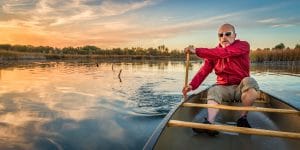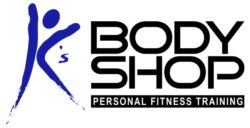Strength Training for Paddle Sports
Paddling a canoe or kayak is a lesson in dynamic balance; the paddler is on a constantly moving and unstable surface. How water moves depends on the medium: vertically in the case of waves on lakes, or horizontally in the case of rivers and streams. Whitewater is the epidome of moving water, as it gets much more complex. Minnesota is blessed with a variety of paddling options for all ability levels, including whitewater kayaking and canoeing, sea kayaking on Lake Superior, or flatwater paddling on thousands of lakes. Most local paddlers like to test their skills in other places too, such as rivers in the Smokies, Appalachians, Rockies or desert southwest. It is highly recommended that paddlers enroll in skill development courses in addition to any physical training specific to the sport, especially for kayaking or whitewater sports.
Musculoskeletal Demands
While many paddlers recognize the importance of upper body strength, canoeing and kayaking are total body sports that rely on strength and flexibility throughout the entire kinetic chain. The lower body provides a connection to the boat, and helps initiate powerful paddle strokes as well as maintain balance. Power generated by the lower body is transferred to the paddle through the trunk, torso, and upper body. Paddle strokes, hull placement in the water, and control of the boat depend on each segment of the body working in concert with one another in all planes of movement. You are only as strong as your weakest link!
Common Muscle Imbalances
Although every individual is different, there are common muscle imbalances seen in paddlers. Because canoeists use a single bladed paddle, they often have more muscle development on one side of the body compared to the other. Muscles that are commonly tight and need to be stretched include: hamstrings, pectorals and anterior shoulder girdle. Paddling also requires a great deal of lateral spinal flexion and hip flexor flexibility. Muscles that are commonly weak and need to be strengthened include: rotator cuff and scapular stabilizers, posterior shoulder girdle, mid and lower trapezius, wrist flexors and extensors, trunk stabilizers such as spinal erectors and abdominals, hip flexors, hip adductors and glutes. Imbalances may need to be addressed not only to improve paddling performance, but to prevent injury.
Training Components
A well rounded training program for paddle sports depends a great deal on what kind of paddling you will be doing, however all require aerobic endurance, balance, agility, upper body strength, lower body strength for stabilizing the boat, flexibility, and core stability.
Common Paddling Injuries
The most common paddling injuries are usually to the shoulder and are a result of improper technique or weakness in the posterior shoulder girdle and rotator cuff. Dislocated shoulders are fairly common in whitewater kayaking and could be minimized by practicing safer paddling techniques.

Training Program Options
Option 1. The most effective option is to work one on one with a professional Strength and Conditioning Coach to ensure that you are doing the most efficient exercises correctly. You will first have an assessment to determine your current cardiovascular fitness, flexibility, and muscle strengths and weaknesses prior to beginning a training program. K’s Body Shop will then utilize that information to design a customized program that determines appropriate exercises and intensities so that you can maximize your paddling performance and minimize the chance for injury. Since there are no contracts, you can work with your trainer as often or as little as you please. Contact K’s Body Shop to schedule your appointment or get more information.
Option 2. If you have a group of paddlers in the Twin Cities area who are interested in having a professional Strength and Conditioning Coach oversee your small group strength training workouts, contact K’s Body Shop. This is a great option for training partners to contain costs while still getting some professional instruction. Since each athlete is different, the workouts will not be completely customized, but you will have the option of discussing appropriate exercise progressions based on your abilities. Prices vary depending on number of participants and location of sessions.
Option 3. If you are comfortable with technology and relatively healthy, Online Coaching can be a cost-effective alternative to face to face training. Check out our free trial to see how the software works!
Contact the Coach if you need help deciding which option is most appropriate for you.
